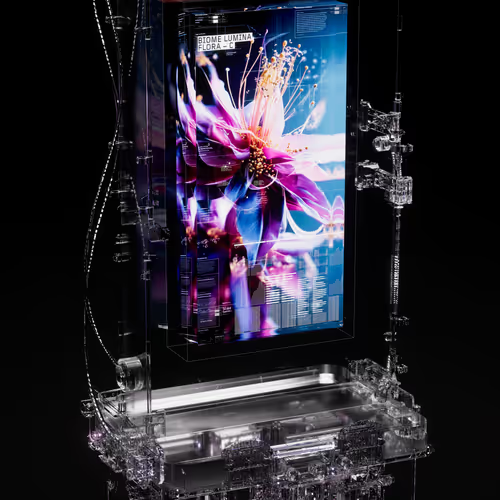Luminiflora Mysticus, named from Latin 'lumen' (light), 'flora' (plants), and 'mysticus' (enigmatic bioluminescence), is a rare aquatic flowering species within the Ethereal Petalachordata cluster. Measuring 10-25 cm and weighing 15-50 g, it features delicate, translucent petals in a complex whorled pattern around a central corolla. Petals emit blue luminescence (450-495 nm) with orange-red bioluminescent speckles, indicating localized photogenic enzymatic activity. Semi-transparent, fleshy leaves and stems adapt for aquatic undulation and nutrient uptake in 0-10°C deep-sea hydrothermal vents. As one of 10 species in its genus, L. Mysticus plays a key ecological role by attracting nocturnal luminescent-sensitive pollinators, facilitating cross-pollination. Its rare, threatened status exemplifies symbiosis of light emission, aquatic morphology, and pollination strategies in extreme marine ecosystems.
